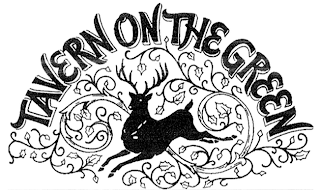After the City of New York successfully won a judgment that it owned the restaurant name, the City and the trustee for the estate entered into a stipulated settlement agreement. The Restaurant Registration would be owned by the City, but a concurrent user could use the Restaurant Mark outside of New York, New Jersey, Connecticut and certain parts of Pennsylvania so long as the concurrent user added a geographic identifier to “Tavern on the Green,” e.g., “Tavern on the Green – Los Angeles.” However, the bankrupt estate would continue to own, and therefore could convey to a buyer, the Oil and Dressing Registration. Also, the buyer from bankruptcy could use and register “Tavern on the Green” for products related to restaurant services like food and tableware. It’s a lot more complicated than that, but that description suffices for my present purposes.
Note that the agreement is a Concurrent User Agreement, not a license. According to the Agreement, the Trustee is selling to the Concurrent User the right to use and register the “Concurrent User’s Marks.”
Although it is a full assignment of marks, the agreement puts limitations on how the buyer can use the marks that are very similar to what one would see in a traditional trademark license. For the restaurant services, the concurrent user
| shall use the Concurrent User’s Marks and Current logo solely to operate . . . full service restaurants, featuring host/hostess and table service, high-quality made-to-order food and distinctive décor; buffet service also maybe offered. For the avoidance of doubt, fast food, drive-through and cafeteria style eating establishments are specifically prohibited . . . . |
The termination provision contemplates a number of noncompliance issues that will be a breach, like the failure to use a disclaimer, the sale of illegal or prohibited services or goods, sales into prohibited territory, and the failure to keep an acceptable level of quality. In the case of uncured breach,
| the City may provide written notice to Concurrent User immediately terminating this Agreement and/or the City’s consent to use the Concurrent User’s Mark or Product Mark with regard to the particular goods or services that are the subject of such breach and/or the City may take such other enforcement actions as it deems appropriate to protect its interests, including but not limited to, filing an action for trademark infringement and/or a petition to cancel the registrations for such marks, and in such event and for purposes of such action, the Concurrent User agrees that a likelihood of consumer confusion shall be presumed to exist and Concurrent User irrevocably waives and agrees not to interpose any legal or equitable defense that does not go to the merits of the action, including incontestability of the registration, statute of limitations, waiver, laches, delay or estoppel. |
I think so and applaud the drafter. The City may not be able to cancel registrations, but that doesn’t make a difference in the long run. For example, if the concurrent user’s registrations are permitted by the terms of the agreement, then the City can’t claim that the concurrent user doesn’t own them. If these registrations are incontestable, they can’t be cancelled as likely to be confused. Since the City has the burden of proof on these legal issues, the concurrent user doesn’t need to raise any defense. So the concurrent user may be able to keep its registrations, but a registration is not a grant of an affirmative right to use the mark. And when challenged for its use of the mark, the concurrent user is stuck – it has agreed that likelihood of confusion is presumed to exist and it may not raise any affirmative defenses. Twenty years from now, the concurrent user won’t be able to claim that the twenty years of concurrent use weigh against likelihood of confusion because it has conceded confusion, and can’t raise affirmative defenses that the City waited to long or that the agreement provides an equitable estoppel. I can’t find any way that the concurrent user can avoid a finding that there is likelihood of confusion and the almost certain injunction that goes with it. Does anyone see any way around it?

The text of this work is licensed under a Creative Commons Attribution-No Derivative Works 3.0 United States License.

